If you haven’t seen it yet, trigger warning, cover the eyes of small children and the aesthetically vulnerable: below this line is Adrien Brody’s art.
It’s been making the rounds on social media after he debuted it at the AMFAR benefit in Cannes. where it sold for 370,000 euros. Mostly the conversation has been about how his paintings of Marilyn Monroe and Disney characters are just “bad” and “derivative.” That’s easy to say, and it’d be easy to guess, as some did, that some “crypto-bro” paid all that money for Brody’s painting to impress his much younger girlfriend. But none of this gets at the question thats beneath both the Brodysquiat, the broader art world, and culture at large.
I have a friend that runs a successful gallery known for it’s prescient, avant-garde program. She is beloved and admired by artists and curators old and young, invited to museum galas and well reviewed by legendary critics. And it was she, of all people, that said to me: “If I see another pile of dirt at the center of a biennial I’m gouging my goddamn eyes out.”
It took me a second to get what she meant. In the interest of being challenging, forward thinking, or critical rather than commercial, a lot of art that’s made by and for the “art world” is so pretentious and navel-gazing that even the most progressive art world insiders are sick of it. It often speaks more to the pretentiousness of the elite who claim to like it. More recently, it virtue signals for those same elite to assuage the mild self loathing that comes with their eliteness.
It’s not just that “pile of dirt art” or “Biennial Art” as I’m calling it here can be boring and hard to relate to, it’s also that even when it’s good, those of us who look at art every day just get tired of it. I’ve noticed this across fields, like in cooking where even the top gastronomic chefs, when interviewed about what they eat in their night off, often say things like “Shake Shack.” One might think they’d be the ideal target to appreciate complex, even pretentious food, but they think about food all day and often just want something easy like a good hamburger. Which makes you wonder, who then are the “foam and tweezers” restaurants for?
The last time I had roommates, I lived with several other musicians in Brooklyn. They were all brilliant instrumentalists: an upright bass player, a drummer, all trained in jazz. I remember we were all sitting around one night when someone put on the new experimental jazz album by Robert Glasper. It riffed through complex arrangements, harmonies, and even atonal passages. Almost immediately, one of the guys, himself a jazz pianist, said, “aw man can you just put on Nicki Minaj or something?” Even the most challenging musicians wanted to relax and listen to something relatable.
I’ve never had an art advisor. My best attempt to explain why, when people ask (and they often do) is that when I was starting out and needed advice, I couldn’t afford to spend enough to make it worth their time. By the time I was able to afford it I was already so engaged and had learned so much that I didn’t encounter anyone who would bring something else to the table.
But that’s not quite true. When I was just starting out, a friend introduced me to one of the grand dames of art advisory: Thea Westreich. We walked around an art fair and she asked me which art I liked, then patiently patiently frowned through my responses. Then she told me she wasn’t interested in anything of that sort.
“Well what type of thing are you interested in?”, I asked.
“There’s no one criteria for what we do like,” she said, “But if it looks like art, we’re not interested,”
I’ve thought about this line a lot. In a way, it’s the mantra of the avant-garde. To be ahead of your time, to be forward thinking means two things: that your work will seem confusing or hard to relate to for others at the time. And also that at some (maybe much later) time it will be as if your work has predicted the future, and now it will seem right on time, in step with the pace of the present years after it was made.
Thea’s idea has shown to be the first of these, but not the second. She was right that we should be open to art that challenges us, confuses us, dares to take on conventions and shatter expectations.
But unfortunately, 13 years after that conversation (and 30+ years after she was implementing these ideas) both the art market and the zeitgeist of the general public have gone the exact opposite direction. If it’s “art that looks like art,” the market loves it. In fact most of the artists that have attained blue chip status or consistent success over the past decade are the ones who make the art that looks the most “like art,” from George Condo to Rashid Johnson, Matthew Wong to Adrian Ghenie.
To be honest, none of these artists have really been my taste, but I can see why they’ve been successful. In making “art that looks like art,” they’ve made an effort to connect with their audience, to be inclusive partly by being “easy.” And in a world where the alternative can seem like it’s only dirt pile Biennial Art, easy isn’t always bad. Like Matisse said, art can be like a good armchair.
Which brings me back to Adrien Brody’s Warhol x Basquiat x Alec Monopoly mashups. It looks like art, or at least an idea of what looks like art to someone who just got thrown out of Liv in Miami to drunk drive the Lambo into Eden Fine Art at 5am Saturday the weekend of Art Basel. I’m going to call this whole area: Douchebag Art.
The scary thing about Douchebag Art is, it kind of makes sense. We’ve backed these people into a corner.
Hear me out. The joke I often tell is, if you told a bunch of people:
“I love art, but I want to find art of the people, in the streets like Haring and Basquiat was, art that reflects the times.”
Someone might say, “Oh, I know just the artist: Mister Brainwash.”
Or maybe on a better day, maybe they’d mention someone like Wes Lang, who has built his own career connecting to popular culture and selling (mostly) outside of the gallery system.
And the sad thing is that they’d sort of be right. Not because I like Mister Brainwash’s cynical exercises in personal branding, but because the traditional art world isn’t really offering any other accessible point of entry. There are some great artists, of course, but there isn’t a wave of artists challenging the system, reflecting the times, and welcoming new people in.
Douchebag Art, with its easy, accessible, “art that looks like art,” by connecting with popular culture and spreading the word with aggressive personal branding and marketing, ends up seeming like an entry point to many. Adrien Brody, Mr Brainwash, even George Condo and Adrian Ghenie make art that is intentionally “iconic,” filled with easy to grasp references to well known images from famous artworks and popular culture. That can be a shortcut for new viewers to have the “visceral experience with art” that we’ve all heard of but rarely experienced.
Pile of dirt Biennial art, on the other hand, references nothing but itself and other in-joke artworks. It connects to insider culture rather than popular culture, or maybe nothing at all. And maybe that’s what it wants. I’m sure a lot of the makers of self referential Artspeak artworks might say they don’t care if a larger (or even any) audience appreciates their work, that it’s made to push boundaries and advance art history. But if a pile of dirt falls in a white cube and no curator even cares to see it, does it make a sound?
Luckily there’s a third path. I’ve always thought that opposing pretension and elitism, yet still striving for greatness and innovation aren’t contradictory ideas. I think the greatest art is challenging and ahead of its time, but also welcoming and inclusive. From Bacon to De Kooning, O’Keefe to Guston, our greatest artists made art that was both radical and relatable.
This all brings me back to Matisse and another Brody, Frances. Matisse famously made “La Gerbe” out of ceramic tiles so it could be seen outdoors by everyone who came to visit the Brody house. When I got to see it on view to the public at LACMA, I was struck by how its cutout style- which was ahead of its time and took a while to catch on in the States- still felt fresh and alive today.
It’s no secret that I believe the future of art comes down to getting more people to participate. That’s why I say “great art for everyone.” Sometimes the part that gets lost is that I genuinely mean the art should be great. Somewhere between the pile of dirt that no one actually thinks is great but seems “serious,” and the avatar of an ape that no one thinks is great but seems “accessible,” is all the art that we love that challenges us to think in new ways. It’s up to us to share it, or be condemned to spend eternity walking museum halls filled with Hollywood-Sign-Marilyns by Adrien Brody.





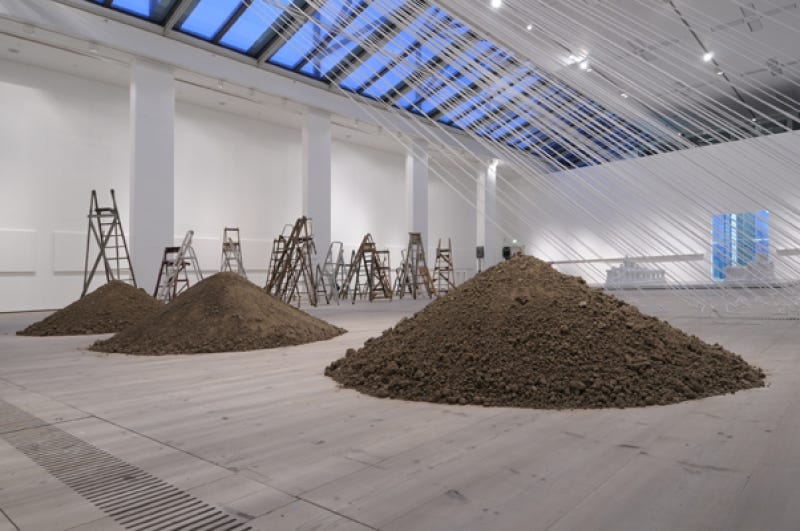

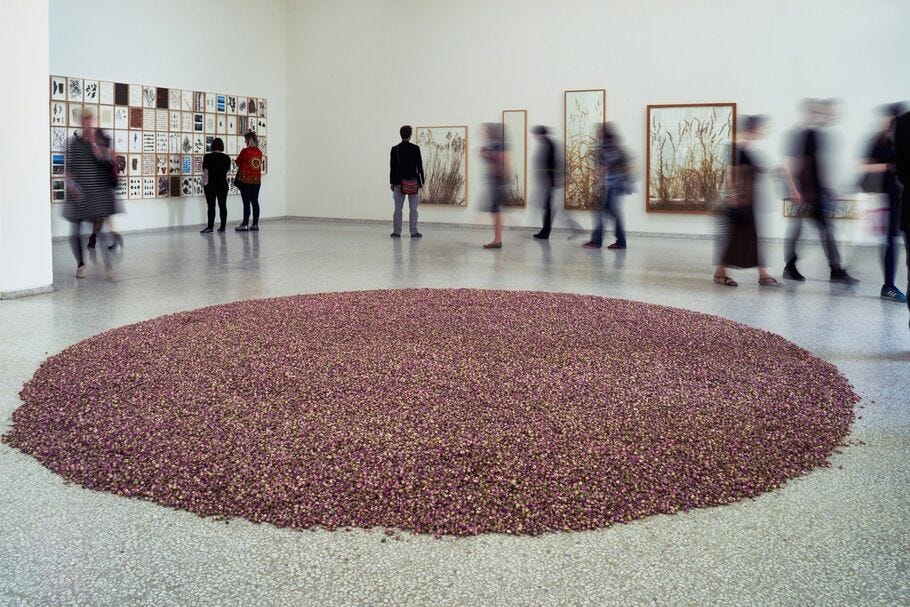


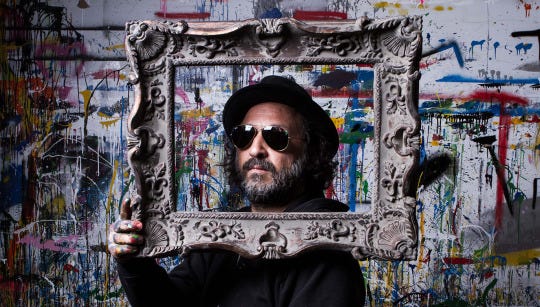
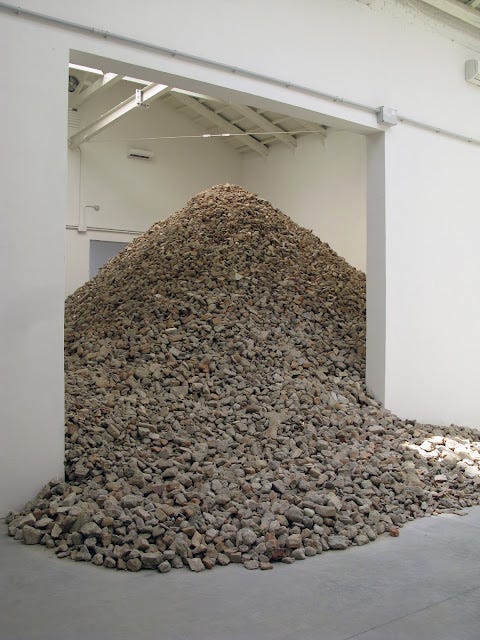
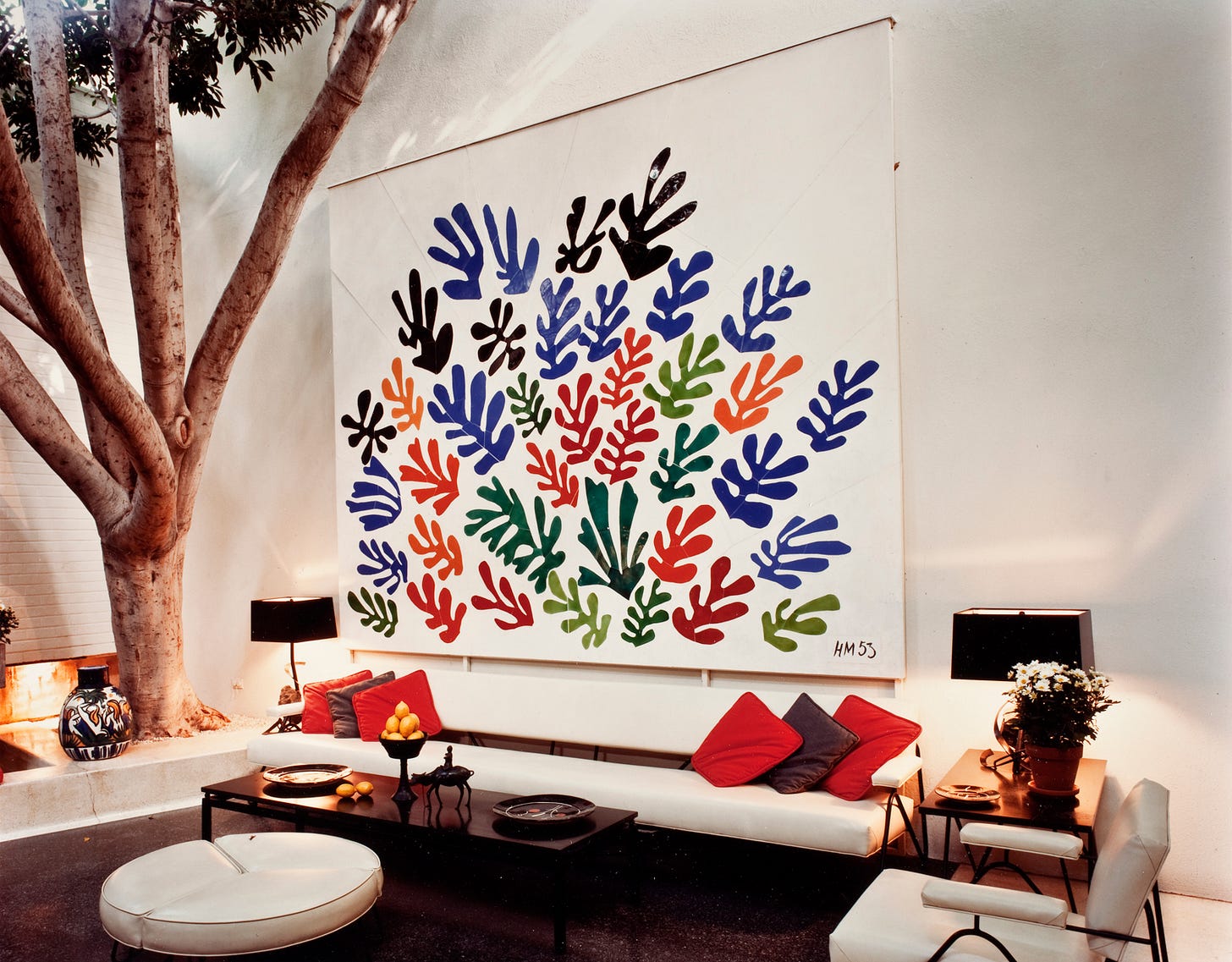
There is lots of great art out there for the masses at more affordable prices than 400k. Just go to any open studio in any city or town and you can go sift through and find some great things. Lots of us are toiling away out here. Adrien Brody was already famous. No way those paintings would sell for that price if he wasn’t already a movie star.
Thank you for articulating this, and being so willing to penetrate what’s underneath Brody’s success. I’ve been tussling with this myself for a long time, as someone who makes paintings and drawings that are definitely not to everyone’s taste (but are a long way from a pile of dirt, lol) … I want to somehow bridge making what I’m interested in making, with encouraging broader connection to, and interest in, art. Encouraging access. I live in sports-mad Australia, so often think of it in terms of, how can we encourage people to participate in art like they do sport? Barrack for artists, follow their careers? Feel invested and included? I really would love to see more people feeling safe and comfortable to connect with art, rather than feeling excluded from an elite club, or like they have to be somehow qualified.
And I guess if total fucking dross like Adrien Brody’s hot garbage Marilyn has to be the gateway drug, so be it? … it really does feel like art AI would make if it had hands and an ego, though 😅